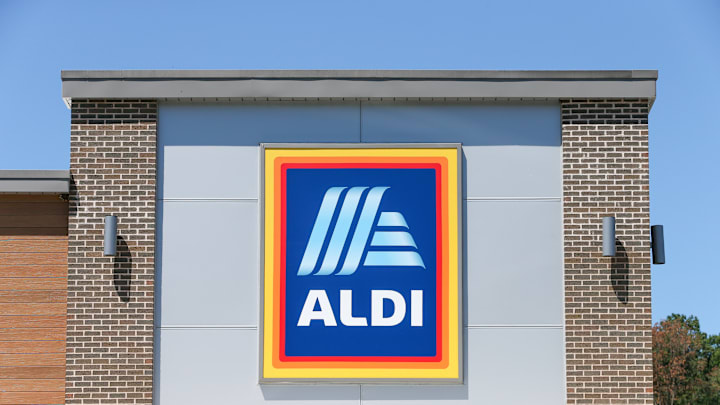Discount grocery chain ALDI has created a lot of consumer loyalty thanks to its commitment to low prices. It’s also become a source of intrigue for people curious about the company’s choices, from having unlisted phone numbers to not playing music in stores. Most explanations come down to one thing: efficiency. That’s also why ALDI covers almost everything it sells in barcode labels.
According to The Daily Meal, ALDI’s liberal barcode policy is part of an effort to get consumers through checkout as quickly as possible. That means that when a cashier scans an item, they don’t need to waste seconds looking at each side to see where the barcode is. They can just grab it and scan it in one pass.
ALDI’s barcodes are also known for being larger, so clerks can spot them easily; it can also help the barcode reader register them without multiple tries. (Not all ALDI products are the in-house brand, and those that aren’t—perhaps 10 percent of its inventory—have conventional barcodes on one side of the product.)
While it may not seem like a big deal, ALDI claims that its barcode policy helps people get through checkout up to 40 percent faster than in conventional stores.
The chain’s dedication to speedy service isn’t limited to its barcodes. ALDI monitors its employees on their checkout speed, and stations are set up for success. Cashiers sit because ALDI believes it allows them to work a little more quickly; they’re also trained to move groceries back to the cart as quickly as possible.
Consumers are expected to have credit or debit cards already in card readers before cashiers are done scanning items; employees also prefer customers to load larger items on the conveyor belt first so they can place them at the bottom of the carts or bags.
Workers have another barcode “trick” of sorts. They may memorize barcode numbers for common items like milk and eggs. That way, when a customer buys multiples of the same item, the cashier can just punch in the barcode rather than scan each one.
